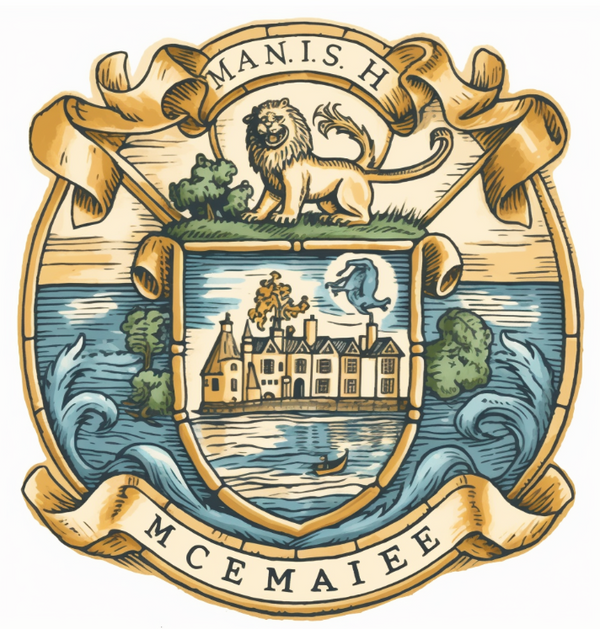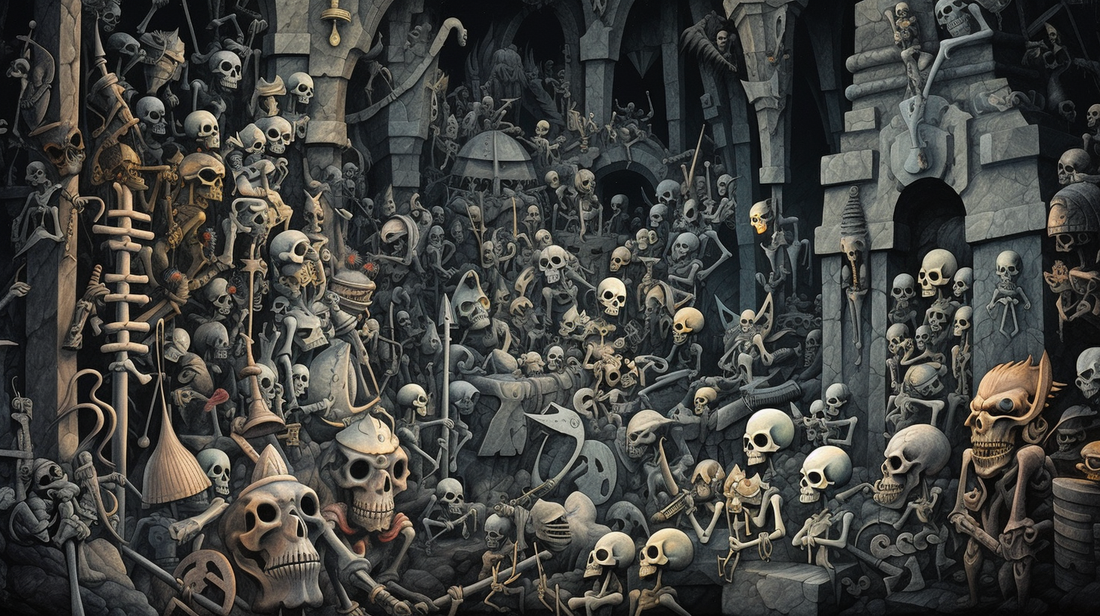Rosario Finnsdóttir, of Mexican-Icelandic heritage, has always had an eerie fascination with death and its embodiment: skeletons. This passion extends beyond the traditional Mexican fascination with death, seen in Día de los Muertos (Day of the Dead) festivities, and delves into a more universal exploration of mortality and afterlife concepts, blending with influences from Icelandic sagas and Nordic myths.
In the early 2020s, Finnsdóttir spent a significant amount of time on Museum Island in the North Sea, an artist colony renowned for its collection of unconventional and groundbreaking artists. Here, amidst a myriad of individuals who were continually pushing the boundaries of artistic norms, Finnsdóttir's obsession with skeletons and death took a unique turn.
Fueled by the wild energy of the island, they began creating massive installations depicting hordes of skeletons and the undead. Each skeleton was painstakingly crafted, and the hordes numbered in the hundreds, sometimes thousands. Their works incorporated mixed media, often blending traditional methods with modern technology. They utilized found objects from the island and its surrounding waters, incorporating weathered driftwood, seashells, and even salvaged shipwreck debris. Their use of bioluminescent algae, inspired by the northern lights from his Icelandic heritage, gave an ethereal glow to these pieces, a haunting light in the skeletal darkness.
One of his most significant installations, "The Gathering of the Nameless", depicted a horde of skeletons emerging from the sea, clawing their way onto the stony shores of the island. The sheer scale of the work, coupled with its eerie bioluminescence, made it look like a ghostly vision from another realm when viewed at night. Visitors were invited to walk among the horde, creating an immersive, haunting, and thought-provoking experience about mortality, life's fragility, and the unknown that lies beyond.
Another notable piece, "Echoes of Existence," was a seemingly infinite army of skeleton warriors, each unique and crafted with a high degree of individual detail. It drew heavily on Icelandic sagas, integrating traditional Nordic armor and weapons. The installation was displayed across the hills of the island, creating an eerie sight of a spectral, endless battle frozen in time.
In these pieces and others, Finnsdóttir confronts viewers with the inescapable reality of death. However, there's also a celebration of life in their work – a testament to the power and endurance of the human spirit. As unsettling as they may be, their installations are a stunning reminder of our shared mortal fate and the profound mystery of what comes next.
Unfortunately, their work took a heavy toll. Close to a coming mental breakdown they poured petrol all over their - by now very popular - installations and burnt them all to ashes. After a few months in an almost catatonic state - on the day of the dead - they roused themselves and started creating artworks on canvas - colourful, sometimes cartoony, but never far from death and its strongest symbol - the human skeleton.

